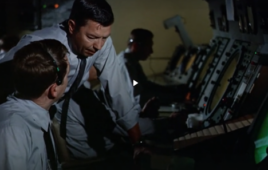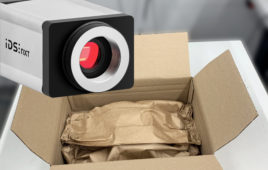Last week, the city of Wilmington, N.C., went live with technology that allowed it to run video surveillance, water monitoring modules and limited broadband service off the empty spectrum that lies between television channels.
The first-ever commercial launch of white space technology marked the successful conclusion of a year-long trial, with the Wireless Innovation Alliance hailing the formal debut of what it called “super Wi-Fi.”
Now the Wi-Fi Alliance, which holds the trademark to the term “Wi-Fi,” has stepped up its call for organizations to stop using the term “super Wi-Fi” to refer to white space service. The argument: It’s not Wi-Fi, and calling white space service “super Wi-Fi” is going to confuse the general public.
“Although white space service is a good thing, we are concerned that continuing to analogize this to Wi-Fi would lead to consumer confusion,” says Kelly Davis-Felner, marketing director for the Wi-Fi Alliance.
The Wi-Fi Alliance wants to replace “super Wi-Fi” with the more accurate description “traditional Wi-Fi routers that include white space spectrum.”
If this seems like a bit of a tempest in a teapot, think back to the lively debate over what constituted “real” 4G service. Operators were – and still are – calling everything from HSPA+ to WiMAX “4G” even though the International Telecommunications Union had yet to even finalize its standards for IMT Advanced, the true definition of fourth generation technology. The marketing caused some confusion with consumers who didn’t understand why the 4G service they had signed up for wasn’t really fourth-generation technology.
The Wi-Fi Alliance wants to stop a similar thing from happening with Wi-Fi. Davis-Felner argues that the white space experience isn’t yet up to the same standards as Wi-Fi. And besides, Wi-Fi is a trademark, not an adjective.
But as the Wireless Innovation Alliance points out, they’re not doing anything unusual in referring to white space service as super Wi-Fi.
“Wi-Fi is a term which the FCC Chairman has used to refer to this innovation in white space spectrum usage,” the group said in response to the Wi-Fi Alliance’s complaint, alluding to comments made by FCC Chairman Julius Genachowski when he opened the airwaves in September 2010. “(The Wireless Innovation Alliance) is not trying to create confusion – we’re simply using the shorthand term already being commonly used by many.”
And indeed, white space technology has been referred to as super Wi-Fi since Genachowski made the spectrum available for unlicensed use.
“We know what the first major application will be: super Wi-Fi,” Genachowski said at the time, describing it as “like Wi-Fi, but with longer range, faster speeds and more reliable connections.”
The catchy sound bite quickly caught on with the media and has since been routinely used to describe what is expected to be the most widespread application of white space spectrum: enhanced Wi-Fi routers. The average consumer with a router marketed as “super Wi-Fi” is unlikely to care that the technology actually uses different spectrum and different signals – all that will matter is that it’s faster and gets a signal into other rooms.
Super Wi-Fi is now common parlance, and it will be hard for the Wi-Fi Alliance to turn the tide. But they’ve had experience dealing with this before, so maybe they can succeed – remember when WiMAX was called “Wi-Fi on steroids”?
Filed Under: Industry regulations




